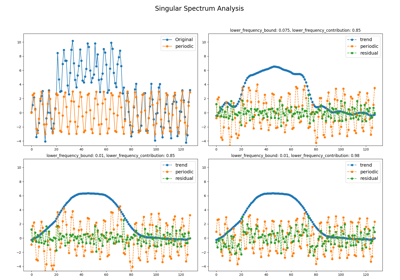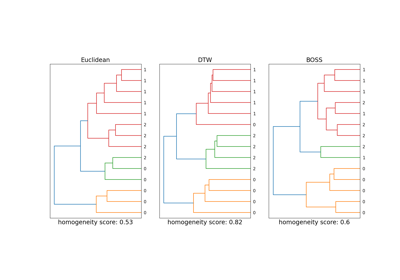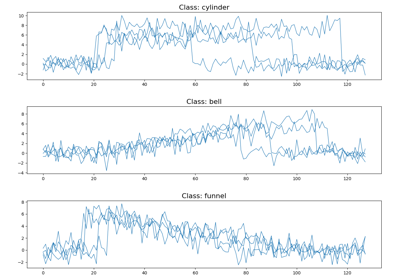pyts.datasets.make_cylinder_bell_funnel¶
-
pyts.datasets.make_cylinder_bell_funnel(n_samples=30, weights=None, shuffle=True, random_state=None, return_params=False)[source]¶ Make a Cylinder-Bell-Funnel dataset.
The classes are coded with the following meaning:
- 0: Cylinder
- 1: Bell
- 2: Funnel
Parameters: - n_samples : int (default = 30)
The number of time series.
- weights : list of floats or None (default=None)
The proportions of samples assigned to each class. If None, then classes are balanced. Note that if
len(weights) == 2, then the last class weight is automatically inferred. More thann_samplessamples may be returned if the sum ofweightsexceeds 1.- shuffle : bool (default = True)
If True, shuffle the samples.
- return_params : bool (default = False)
If True, a dictionary containing the parameters used to make the time series is returned.
- random_state : int, RandomState instance or None (default = None)
Determines random number generation for dataset creation. Pass an int for reproducible output across multiple function calls.
Returns: - X : array, shape = (n_samples, 128)
Generated time series.
- y : array, shape = (n_samples,)
Generated class labels. Labels have the following meaning:
- 0: Cylinder
- 1: Bell
- 2: Funnel
- params : dict
The parameters used to generate the data. The keys are ‘a’, ‘b’, ‘eta’ and ‘epsilon’ and the values are the corresponding values. Only returned if
return_params=True.
Notes
The time series are generated from the following distributions:
where
,
is an integer-valued uniform random variable on the inverval
,
is an integer-valued uniform distribution on the inveral
,
and
are standard normal variables,
is the characteristic function on the interval
.
,
, and
stand for “cylinder”, “bell”, and “funnel” respectively.
References
[1] N. Saito, “Local feature extraction and its application using a library of bases”. Ph.D. thesis, Department of Mathematics, Yale University, 1994. Examples
>>> import numpy as np >>> from pyts.datasets import make_cylinder_bell_funnel >>> X, y = make_cylinder_bell_funnel() >>> X.shape (30, 128) >>> print(np.bincount(y)) [10 10 10]
Examples using pyts.datasets.make_cylinder_bell_funnel¶

Trend-Seasonal decomposition with Singular Spectrum Analysis



